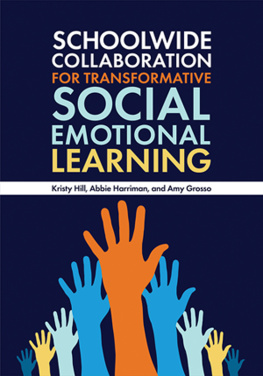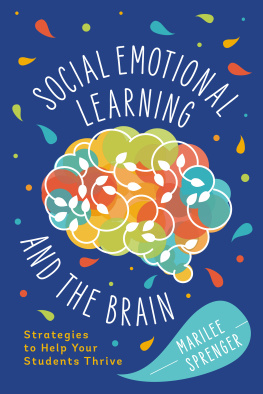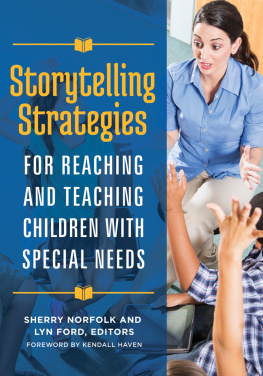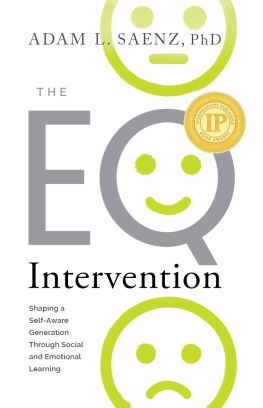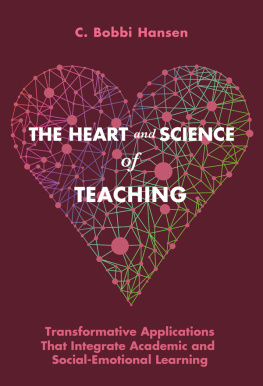Schoolwide Collaboration for
Transformative Social Emotional
Learning
SCHOOLWIDE COLLABORATION
FOR TRANSFORMATIVE SOCIAL
EMOTIONAL LEARNING
Kristy Hill, Abbie Harriman, and Amy Grosso

Copyright 2021 by Kristy Hill, Abbie Harriman, and Amy Grosso
All rights reserved. No part of this publication may be reproduced, stored in a retrieval system, or transmitted, in any form or by any means, electronic, mechanical, photocopying, recording, or otherwise, except for the inclusion of brief quotations in a review, without prior permission in writing from the publisher.
Library of Congress Cataloging-in-Publication Data
Names: Hill, Kristy, author. | Harriman, Abbie, author. | Grosso, Amy, author.
Title: Schoolwide collaboration for transformative social emotional learning / Kristy Hill, Abbie Harriman, and Amy Grosso.
Description: Santa Barbara, California : Libraries Unlimited, An imprint of ABC-CLIO, LLC, 2021. | Includes bibliographical references and index.
Identifiers: LCCN 2021025098 (print) | LCCN 2021025099 (ebook) | ISBN 9781440876592 (paperback) | ISBN 9781440876608 (ebook)
Subjects: LCSH: Affective education. | Transformative learning. | School environment. | TeachersProfessional relationships.
Classification: LCC LB1072 .H55 2021 (print) | LCC LB1072 (ebook) | DDC 370.15/34dc23
LC record available at https://lccn.loc.gov/2021025098
LC ebook record available at https://lccn.loc.gov/2021025099
ISBN: 978-1-4408-7659-2 (paperback)
978-1-4408-7660-8 (ebook)
252423222112345
This book is also available as an eBook.
Libraries Unlimited
An Imprint of ABC-CLIO, LLC
ABC-CLIO, LLC
147 Castilian Drive
Santa Barbara, California 93117
www.abc-clio.com
This book is printed on acid-free paper 
Manufactured in the United States of America
CONTENTS
WHY IS TRANSFORMATIVE SOCIAL EMOTIONAL LEARNING IMPORTANT?
TSEL are four little letters that have the ability to transform the climate of an entire school. Transformative social emotional learning (TSEL) is not a quick fix and is not something that can be implemented after one book study. Instead TSEL is a mindset that requires ongoing learning and buy-in from an entire campus. For the benefits of TSEL to be fully realized, the commitment cannot be short-term. Instead, TSEL needs to be a decision for the foreseeable future, with the understanding that through ongoing evaluation, new opportunities for learning and ongoing adjustments will be needed.
Social emotional learning (SEL) has been a buzzword in education for years and has recently been prioritized by many school districts as a means of providing tier 1 supports in schools where counselors are finding themselves more and more engaged in supporting mental health and behavior issues. TSEL is the term adopted by CASEL to define this type of equity inclusion in the work of SEL and is the term that will be used in this book.
There is, however, a growing body of research that shows that TSEL can be counterproductive if not implemented with equity in mind. It is important that educators efforts to support students do not become another way of dehumanizing or policing them (Jagers, Rivas-Drake, and Williams 2019). Patrick Camangian, from the University of San Francisco, developed a Framework of Humanizing Pedagogy that addresses the need to work toward equity in schools and emphasizes the need for acknowledging students lived experiences and histories as a means of creating safe spaces so the work of TSEL can take place (Camangian 2015).
For TSEL to be a schoolwide endeavor, it takes campus administration not only to fully support but also to be fully committed. When campus leadership is leading the charge for schoolwide TSEL, buy-in from each person is possible. While a teacher taking on the charge for one class will result in positive impacts for the students in that class, the full benefit of TSEL is only realized when each person, from the principal to the librarian to the custodians to the nurse, is fully invested and see their own part in creating a climate based on TSEL.
In education, the adding of another program or initiative onto the already full plates of teachers is sadly a common practice. TSEL is not another thing on the plate; instead, TSEL is the plate. TSEL is not something done to students; it is a way of being in each moment that must be fully embraced and practiced by educators before even considering teaching it to students.
It is evident that students are experiencing record levels of mental health concerns. Anxiety has taken the spot as the number one mental health concern for students. Educators across the country are reporting seeing signs and symptoms in a broad range of students at younger and younger ages. While it is tempting to say the only answer for these concerns is to put services in place to assist the group of students struggling, it is critical that education takes not only this reactive approach but also a proactive approach. TSEL is the proactive approach that is needed. Implementing of TSEL does not mean students will no longer struggle with mental health concerns; instead, it means students will not only have the tools and skills needed to cope but also the ability to voice concerns before they become a crisis.
HOW TO USE THIS BOOK
This book was written with the whole school in mind. The ideas and tools in this book are meant to be shared with and used by everyone in the school building, including administrator, teachers, librarians, and school support staff. It is presented in four parts.
is the research and pedagogy that provides the background information needed to implement schoolwide TSEL with fidelity. This part is particularly important for administrators and counselors in the school but should also be shared with teachers, librarians, and other staff members who are providing instruction and programming to support the goals and objectives of TSEL.
In , the authors outline the roles and responsibilities of each person on campus. This part helps schools to develop a common language and a common understanding of each staff members role in improving the school climate and creating a culture of belonging.
Outcomes and objectives are identified in . Readers can jump to this part to see the results of TSEL. In this section, the authors will share expected outcomes for school climate, student success, developing passionate educators, and improved community involvement.
The final section of this book is the application piece. In , readers will be presented with the practical piece of TSEL. Educators are provided with tools and strategies for teaching thirty-six TSEL skills. This section was developed with the school calendar in mind, so that each skill could be focused on for one week.
Everything your school needs to create a schoolwide TSEL protocol is included in this book. It is recommended that all of those leading in the area of TSEL read each section of this book in its entirety. From there, others can jump to the sections that are most relevant to their role in the school building and/or to the skill being taught.
APPLICATION
TSEL is extremely simple to implement and extremely impactful. The application portion of this book has a breakdown of essential social and emotional skills and how they can be taught in and out of the classroom.

